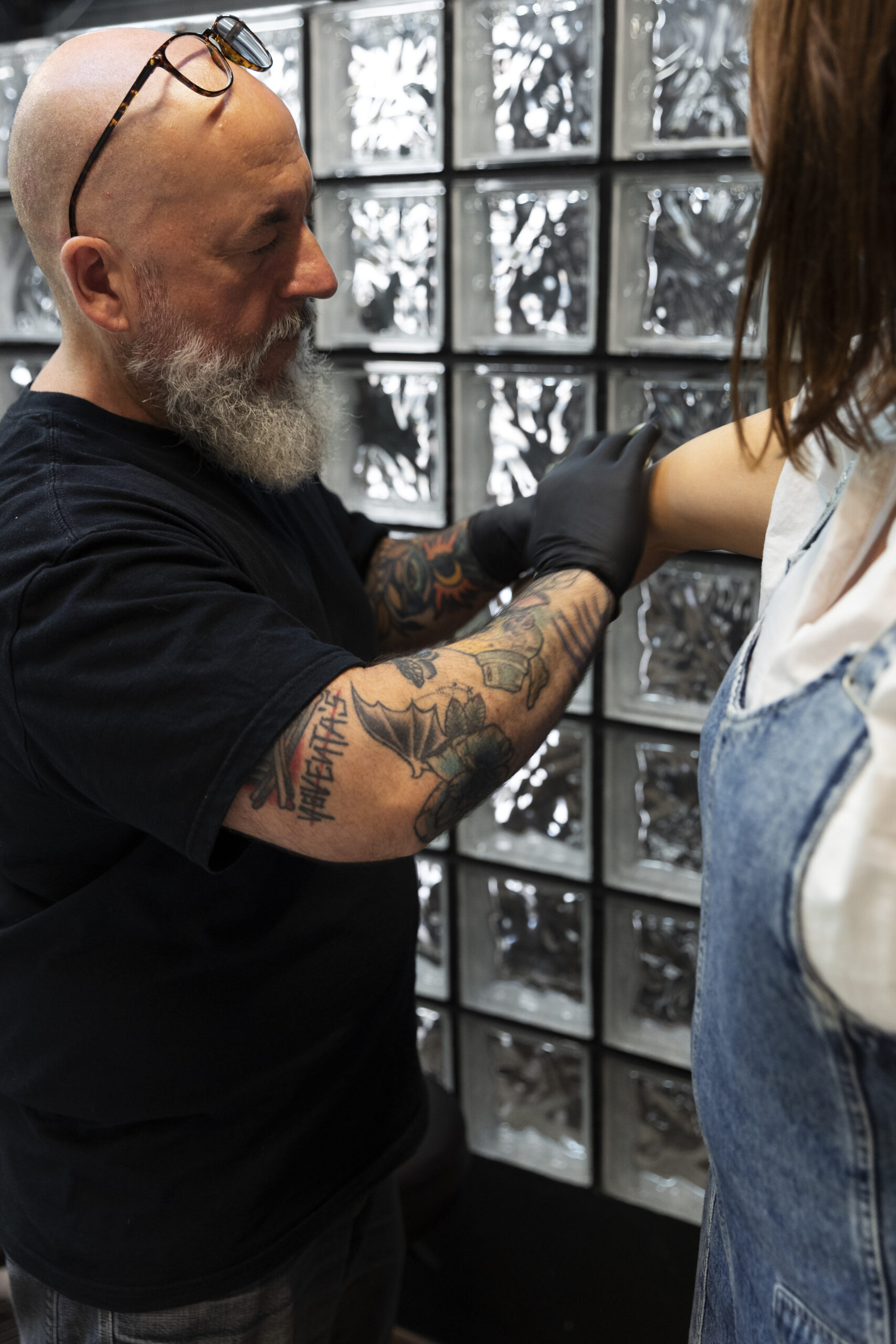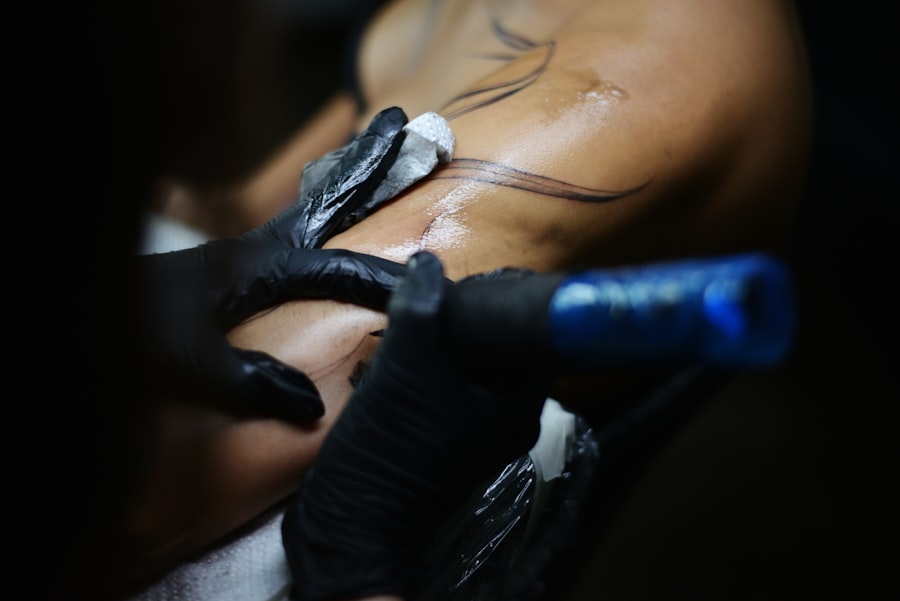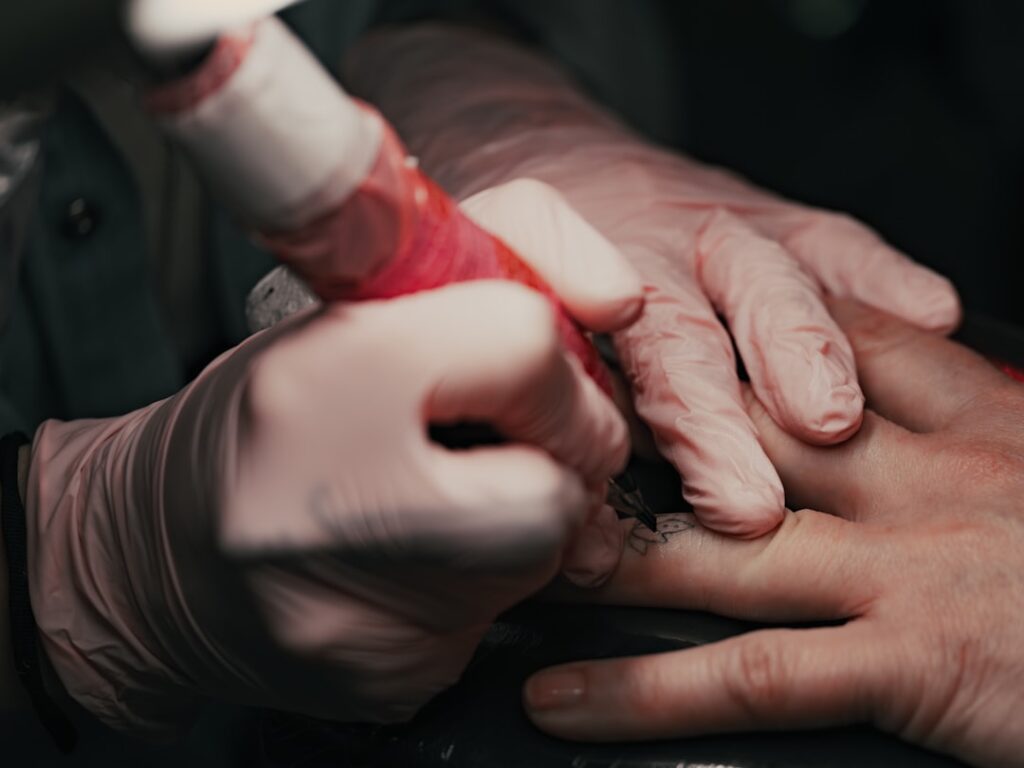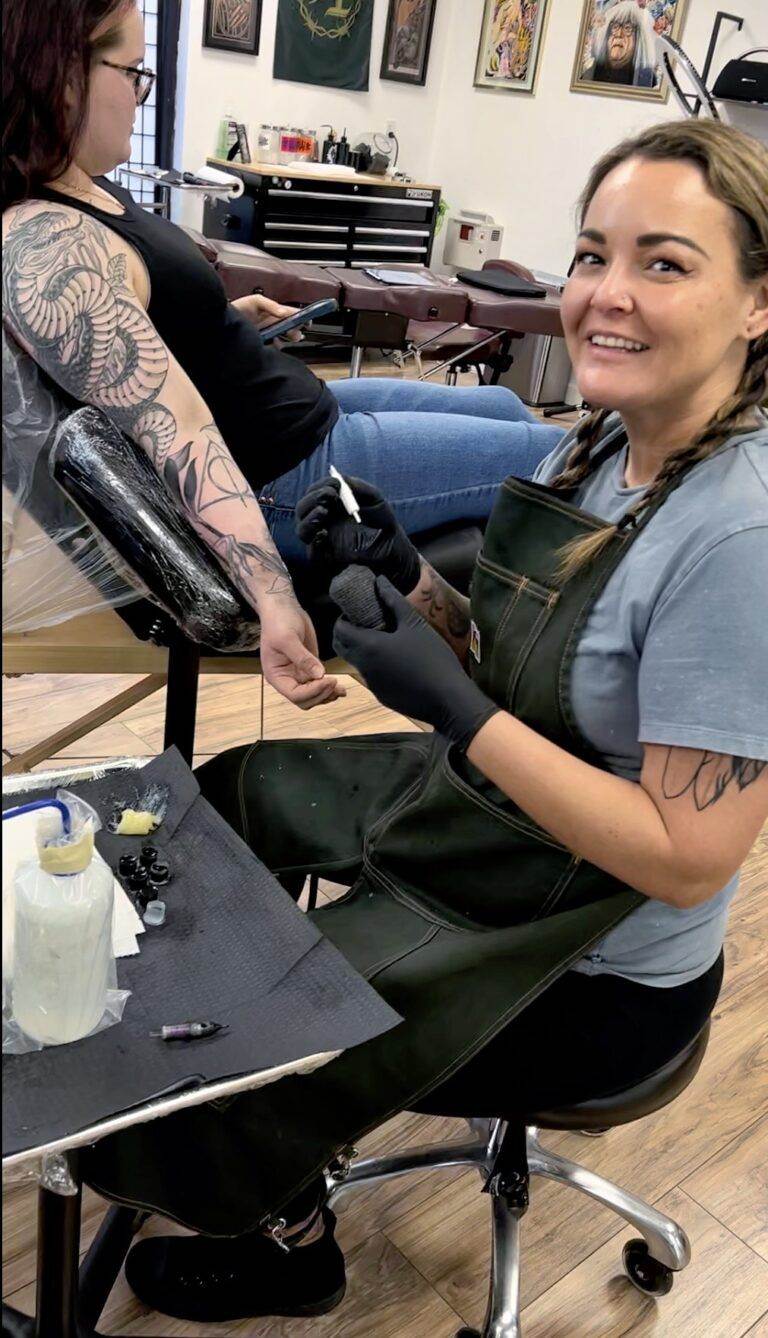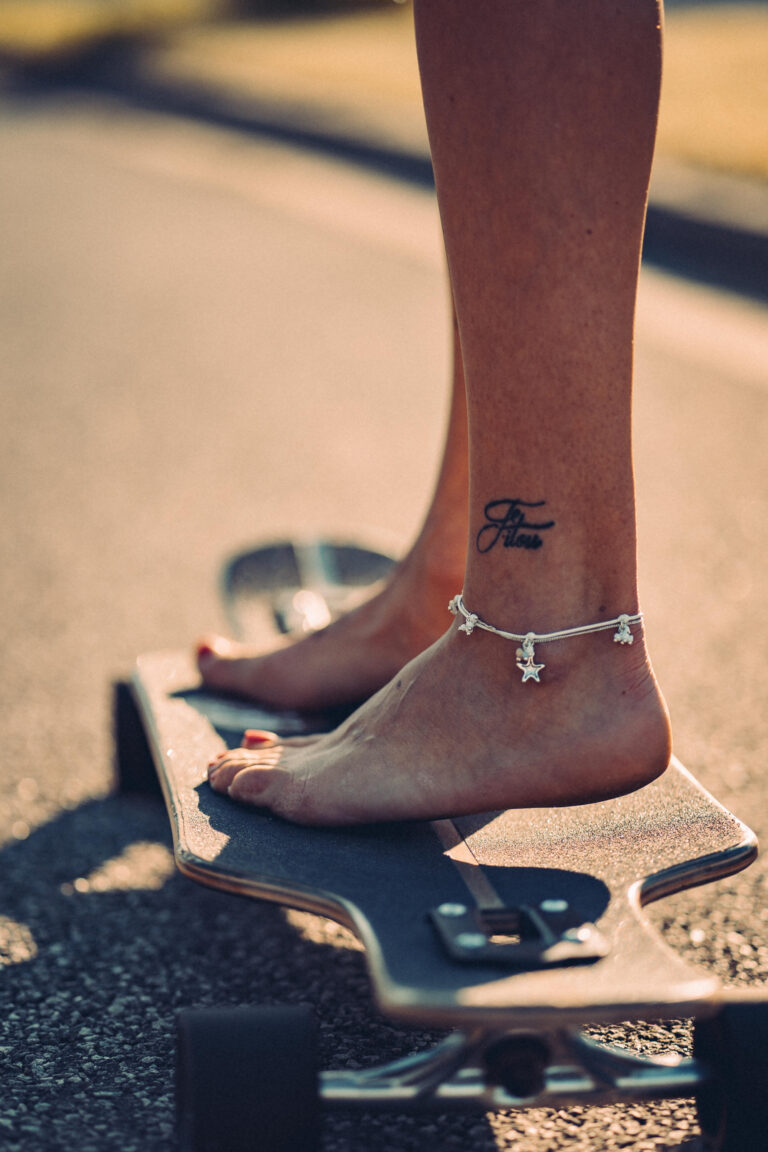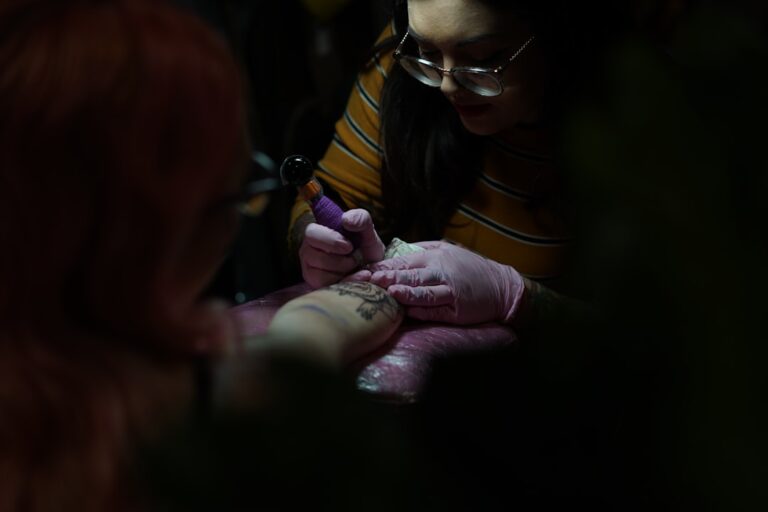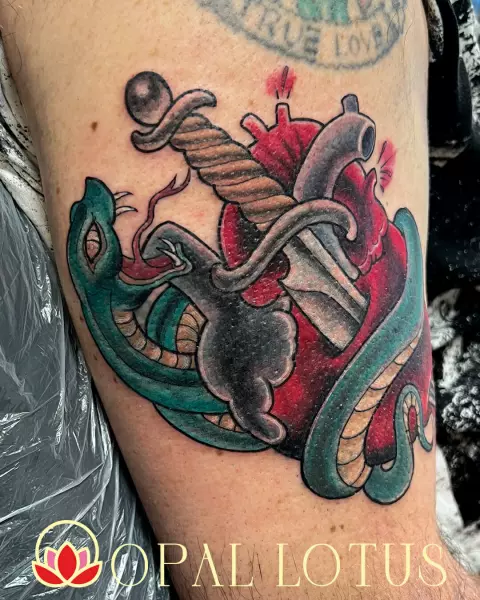Dotwork tattoos have a rich and intricate history that traces back to ancient cultures, where the use of dots and patterns was prevalent in various forms of art and body modification. The origins of dotwork can be linked to tribal tattoos, where indigenous peoples utilized simple dot patterns to convey stories, signify status, or represent spiritual beliefs. These early forms of tattooing often employed rudimentary tools, yet they laid the groundwork for the complex designs we see today.
As tattooing evolved through different cultures, the use of dots became a method to create depth and texture, allowing artists to explore new dimensions in their work. In more recent history, the dotwork technique gained prominence in the late 20th century, particularly within the realms of contemporary tattoo art. Artists began to experiment with this method, pushing the boundaries of traditional tattooing by incorporating intricate dot patterns into their designs.
This resurgence was influenced by various art movements, including pointillism in painting, where artists like Georges Seurat used small dots of color to create larger images. As tattoo enthusiasts sought unique and personalized designs, dotwork emerged as a favored choice, allowing for a blend of artistry and individuality that resonated with many.
Key Takeaways
- Dotwork tattoos have a rich history dating back to ancient times, with evidence of the technique found in various cultures around the world.
- The technique behind dotwork tattoos involves creating intricate designs using only dots, resulting in a unique and visually striking tattoo.
- Precision is crucial in dotwork tattoos, as the placement and density of the dots can greatly impact the final outcome of the design.
- Patience is key when getting a dotwork tattoo, as the process can be time-consuming due to the meticulous nature of creating the design with individual dots.
- There are various styles and designs of dotwork tattoos, including geometric patterns, mandalas, and intricate dotwork shading, offering a wide range of options for those interested in this style of tattooing.
The Technique Behind Dotwork Tattoos
The technique of dotwork tattoos is characterized by the meticulous placement of tiny dots to form images and patterns. Unlike traditional tattooing methods that often rely on solid lines and shading, dotwork employs a stippling technique that creates depth through varying densities of dots. This approach allows for a unique visual effect, where the interplay of light and shadow can give the illusion of three-dimensionality.
Artists often use different needle configurations to achieve varying dot sizes and spacing, which contributes to the overall texture and detail of the design. Creating a dotwork tattoo requires a high level of skill and precision. The artist must have a keen eye for detail and an understanding of how light interacts with shapes.
Each dot must be placed with intention, as even slight variations can alter the final appearance of the piece. This technique can be time-consuming, as artists often spend hours meticulously applying dots to achieve the desired effect. However, the result is a stunning piece of art that showcases not only the artist’s technical abilities but also their creative vision.
The Importance of Precision in Dotwork Tattoos
Precision is paramount in dotwork tattoos, as the entire aesthetic relies on the careful arrangement of dots to create cohesive images. A single misplaced dot can disrupt the flow of a design or alter its intended meaning. Therefore, artists must possess not only technical skill but also an acute sense of spatial awareness.
This precision is what distinguishes a well-executed dotwork tattoo from one that appears haphazard or poorly planned. Moreover, precision in dotwork tattoos extends beyond just the placement of dots; it also encompasses the overall composition of the design. Artists must consider how each element interacts with others within the piece, ensuring that the final product is harmonious and visually appealing.
This level of attention to detail is what makes dotwork tattoos particularly captivating; they invite viewers to explore the intricacies of the design up close, revealing layers of meaning and artistry that may not be immediately apparent.
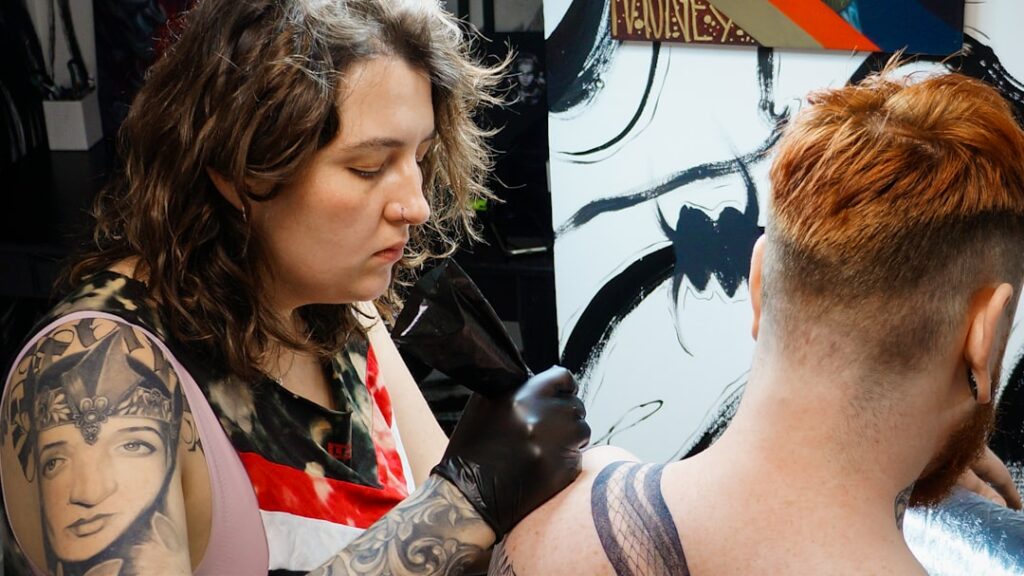
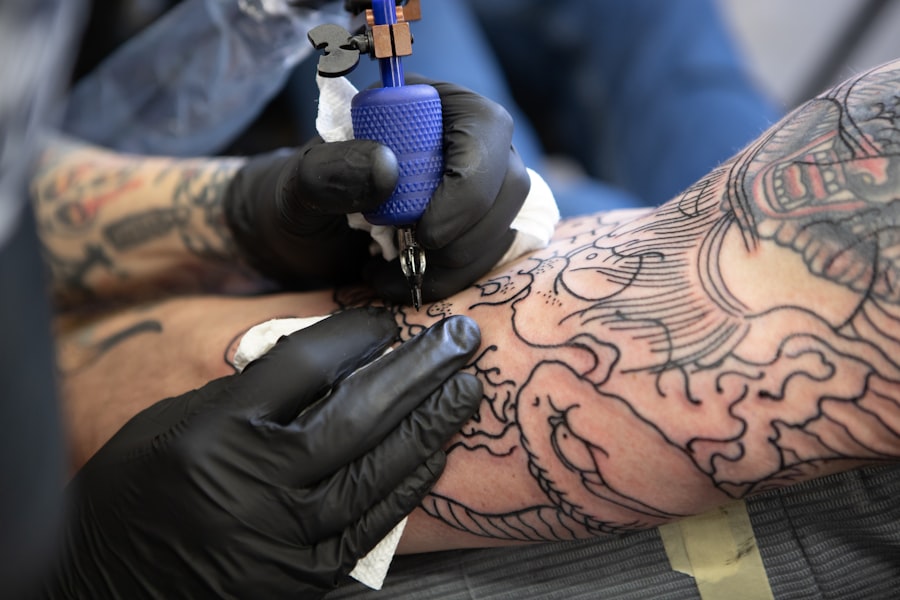
The Role of Patience in Dotwork Tattoos
Patience is an essential virtue in the world of dotwork tattoos. The process can be labor-intensive, requiring artists to work methodically and deliberately as they build up layers of dots to create depth and texture. Unlike traditional tattooing methods that may allow for quicker execution, dotwork demands a slower pace to ensure that each dot is placed with care.
This patience not only benefits the artist but also enhances the experience for clients who appreciate the artistry involved in their tattoos. For clients receiving dotwork tattoos, understanding the time commitment involved can foster a greater appreciation for the final piece. The process may take several hours or even multiple sessions, depending on the complexity of the design.
However, this investment in time often results in a tattoo that is not only visually stunning but also deeply meaningful. The patience exhibited by both artist and client ultimately contributes to a stronger bond between them, as they collaborate on creating a unique piece of art that tells a personal story.
Different Styles and Designs of Dotwork Tattoos
Dotwork tattoos encompass a wide array of styles and designs, making them versatile and appealing to various tastes. From geometric patterns to organic shapes inspired by nature, dotwork can be adapted to suit individual preferences. Geometric dotwork often features intricate mandalas or symmetrical designs that create a sense of balance and harmony.
These pieces can range from simple shapes to complex arrangements that challenge the viewer’s perception. On the other hand, organic dotwork designs may draw inspiration from natural elements such as flowers, animals, or celestial bodies. These tattoos often incorporate flowing lines and shapes that mimic the beauty found in nature.
The use of dots in these designs allows for a soft transition between elements, creating a sense of movement and fluidity. Regardless of style, dotwork tattoos offer endless possibilities for customization, enabling individuals to express their unique identities through art.
The Popularity of Dotwork Tattoos in the Modern Era
In recent years, dotwork tattoos have surged in popularity among tattoo enthusiasts and artists alike. This trend can be attributed to several factors, including the growing appreciation for intricate artistry and personalized designs. As more people seek tattoos that reflect their individuality, dotwork provides an avenue for self-expression that resonates with many.
The technique’s ability to create visually striking pieces has made it a favorite among those looking for something beyond traditional tattoo styles. Social media platforms have also played a significant role in elevating the visibility of dotwork tattoos. Artists showcase their work online, allowing potential clients to discover new styles and designs that inspire them.
This exposure has led to an increased demand for dotwork tattoos, as individuals are drawn to the unique aesthetic and craftsmanship involved. As more artists master this technique, it continues to evolve, pushing boundaries and inspiring new trends within the tattoo community.
Finding the Right Dotwork Tattoo Artist
Choosing the right artist for a dotwork tattoo is crucial to achieving a successful outcome. Not all tattoo artists specialize in this technique; therefore, it is essential to research potential artists thoroughly before making a decision. Look for portfolios that showcase their experience with dotwork specifically, paying attention to their attention to detail and overall style.
A skilled artist will have a body of work that reflects their proficiency in creating intricate designs using dots. Additionally, consider scheduling consultations with potential artists to discuss your ideas and gauge their understanding of your vision. A good artist will listen attentively and offer suggestions based on their expertise while ensuring that your preferences are taken into account.
Building rapport with your chosen artist can enhance the overall experience and lead to a more satisfying result. Ultimately, finding an artist who resonates with your aesthetic sensibilities will contribute significantly to your satisfaction with your dotwork tattoo.
Tips for Caring for Dotwork Tattoos

Proper aftercare is essential for ensuring that your dotwork tattoo heals well and retains its beauty over time. After receiving your tattoo, follow your artist’s specific aftercare instructions closely, as they may vary based on individual techniques and skin types. Generally, keeping the tattoo clean and moisturized is crucial during the healing process.
Use mild soap and lukewarm water to gently cleanse the area without scrubbing or irritating it. Additionally, applying a thin layer of fragrance-free moisturizer or healing ointment can help keep the skin hydrated and promote healing. Avoid exposing your new tattoo to direct sunlight or soaking it in water for extended periods during the initial healing phase.
As your tattoo heals, you may notice some flaking or peeling; this is normal and should not be picked at or scratched. By following these care tips diligently, you can ensure that your dotwork tattoo remains vibrant and well-defined for years to come. In conclusion, dotwork tattoos represent a fascinating blend of history, technique, precision, patience, and artistry.
Their growing popularity reflects a broader trend toward personalized expression through body art. By understanding the intricacies involved in this unique style and taking care when selecting an artist and maintaining your tattoo, you can enjoy a stunning piece of art that tells your story for years to come.
FAQs
What are dotwork tattoos?
Dotwork tattoos are a style of tattooing that uses only dots to create intricate designs and shading. This technique involves the use of thousands of tiny dots to build up the image, rather than using traditional lines or shading techniques.
How are dotwork tattoos created?
Dotwork tattoos are created by using a single needle to create a series of dots that form the desired design. The artist carefully places each dot to build up the image, creating depth and shading through the density and spacing of the dots.
What is the significance of precision and patience in dotwork tattoos?
Precision and patience are crucial in dotwork tattoos because the technique requires meticulous attention to detail and a steady hand to create a cohesive and visually appealing design. The artist must have a high level of skill and focus to ensure that each dot is placed with accuracy and consistency.
What are the benefits of dotwork tattoos?
Dotwork tattoos offer a unique and visually striking aesthetic that sets them apart from traditional tattoo styles. The use of dots allows for intricate and detailed designs, and the technique can create a sense of depth and texture that is not easily achieved with other tattooing methods.
Are dotwork tattoos more painful than traditional tattoos?
The pain level of a dotwork tattoo is similar to that of a traditional tattoo, as both techniques involve the use of a tattoo machine and needle. However, the duration of the tattoo session may be longer for dotwork tattoos due to the meticulous nature of the technique.
